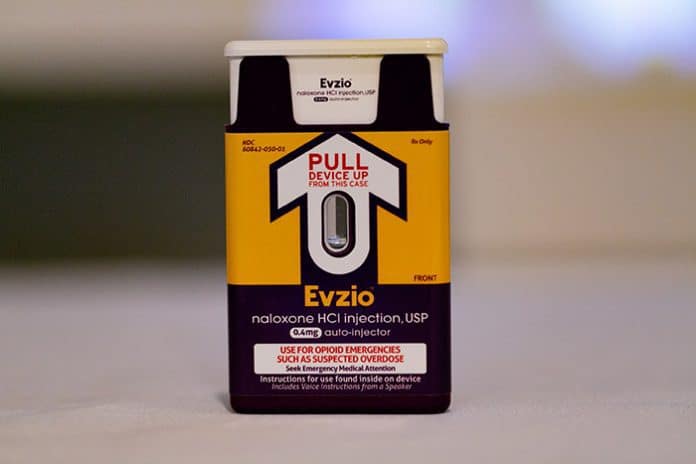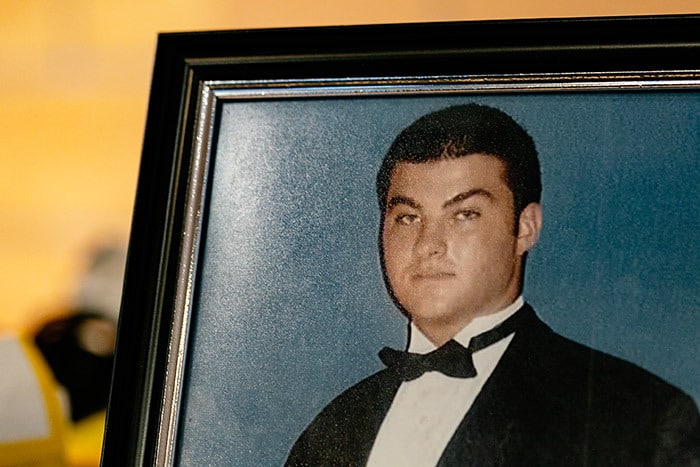
TOMS RIVER – Corey Ressler was 22 when he died of an opioid overdose. In the summer of 2010, friends called 911 from Corey’s cell phone, but the call dropped. Someone called 911 from a different location about 30 minutes later, but it was too late.
Corey’s father, Paul, wanted people to be able to call for help without fear of prosecution. He wanted those overdosing to have a chance to live and get help. Paul Ressler created The Overdose Prevention Agency Corporation in Hamilton.
His group, with others, worked tirelessly to get the Overdose Protection Act passed. The law, passed in 2013, protects callers reporting an overdose from arrest and prosecution.
TOPAC’s focus now is naloxone training, which is often the first step in saving the life of someone who has overdosed on an opioid.

Heidi Modjeski, TOPAC’s director of community outreach and training development, spoke on the signs of an opioid overdose and how to properly administer naloxone – the generic name for Narcan – at a recent training session at Ocean County College.
“Our goal is to train individuals how to use (naloxone), so we can help the people so they can get the help they need to get into recovery,” Modjeski said.
It’s important to first understand how opioids attack the body. The opioids bind to opioid receptors in cells throughout the body, especially those that affect sleeping and breathing. Basically, the opioid tells the brain “You don’t have to breathe.” Those who have overdosed are nonresponsive to shouts or aggressive touch. Their lips and fingertips are blue, their breathing labored like a death rattle, their pupils a pinpoint. The heartbeat is faint.
The most important thing to do for someone is call 911. The caller must stress that the person isn’t breathing, that it’s a possible overdose.
While many users ingest a cocktail of drugs, naloxone will only reverse the overdose of opioids, which emergency workers say is positive. The naloxone tells the body it’s not high anymore, but only for about 30 minutes. (And if it ends up they aren’t overdosing on an opioid, the naloxone will do no harm. It’s safe to use on pregnant women, too.)
“The person who is going to wake up from this, they could be extremely angry, there could be violence, they could be very groggy. They might not know where they are at,” Modjeski said. “And then the worst thing is, they might immediately want to get high again. They’ve likely not felt so sober in a long time.”
A person can relapse into an overdose once the naloxone wears off. It is okay to administer another dose, Modjeski said. They cannot overdose on naloxone. It’s important to keep the person breathing while waiting for emergency teams to arrive.

There are several ways to deliver naloxone, but the most popular are nasal sprays, which are now available over the counter at popular drug store chains, or auto injector, which does require a prescription. And while it may seem like common sense to store the drug in a glove compartment of a vehicle, naloxone does go bad and must be stored at room temperature, around 70 degrees.
So what should someone do if a friend or loved one appears to have overdosed on an opioid? You should first try to rouse them, first by shouting their name, then rubbing your knuckles on their breastbone or nose tip. If the person remains unresponsive, call 911. Roll the person on their side and clear their mouth. Roll them on their back, arch their neck, pinch their nose, and give two big breaths of air into their mouth. Administer the Narcan, and give one big breath every five to seven seconds if necessary.
Most naloxone nasal sprays available are administered in one nostril. Auto injectors are administered in the upper thigh.
And Modjeski’s biggest piece of advice to those helping the overdose victim: don’t touch any bags laying around. A little boy in South Jersey died recently when he touched a bag containing fentanyl, which can be absorbed through the skin and is lethal in small doses. The boy overdosed and died immediately. Even healthcare workers double up on gloves when handling fentanyl. Wait for the authorities to arrive and handle any bags or paraphernalia, Modjeski warned.
For more information on TOPAC, visit overdosepreventionagency.org.






